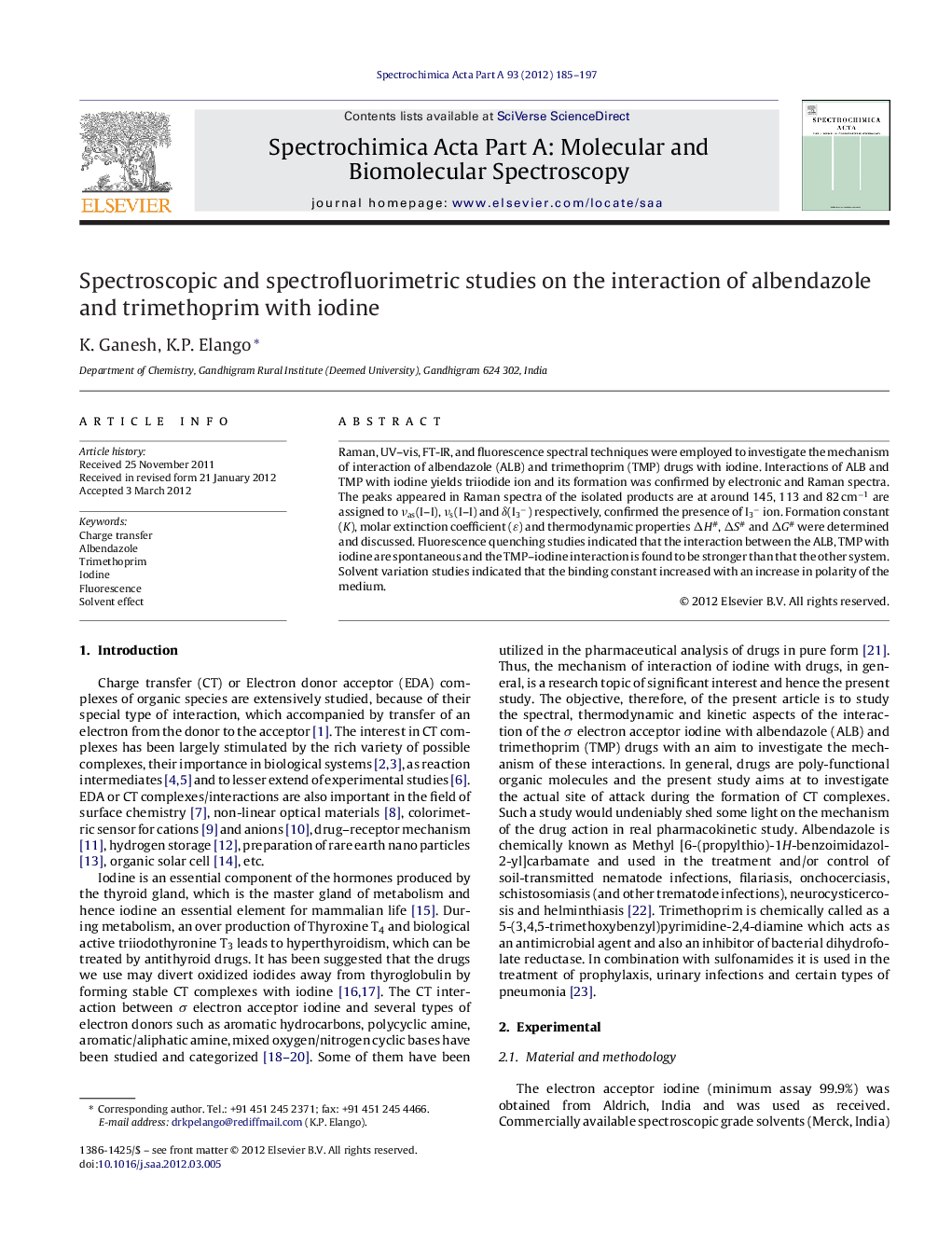| Article ID | Journal | Published Year | Pages | File Type |
|---|---|---|---|---|
| 1232776 | Spectrochimica Acta Part A: Molecular and Biomolecular Spectroscopy | 2012 | 13 Pages |
Raman, UV–vis, FT-IR, and fluorescence spectral techniques were employed to investigate the mechanism of interaction of albendazole (ALB) and trimethoprim (TMP) drugs with iodine. Interactions of ALB and TMP with iodine yields triiodide ion and its formation was confirmed by electronic and Raman spectra. The peaks appeared in Raman spectra of the isolated products are at around 145, 113 and 82 cm−1 are assigned to νas(I–I), νs(I–I) and δ(I3−) respectively, confirmed the presence of I3− ion. Formation constant (K), molar extinction coefficient (ɛ) and thermodynamic properties ΔH#, ΔS# and ΔG# were determined and discussed. Fluorescence quenching studies indicated that the interaction between the ALB, TMP with iodine are spontaneous and the TMP–iodine interaction is found to be stronger than that the other system. Solvent variation studies indicated that the binding constant increased with an increase in polarity of the medium.
Graphical abstractFigure optionsDownload full-size imageDownload as PowerPoint slideHighlights► The mechanism of interaction of albendazole and trimethoprim drugs with iodine has been investigated. ► Trimethoprim was found to form relatively stronger complex with iodine than albendazole. ► Fluorescence quenching studies indicated that the interaction between the drugs and the acceptor is spontaneous.
